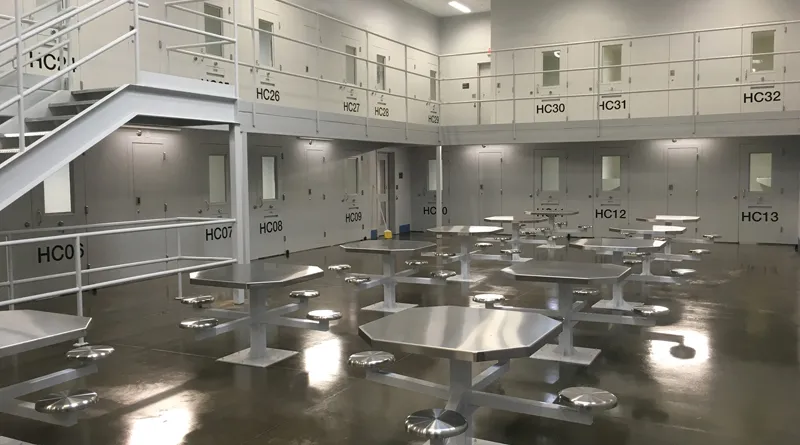What Detention Equipment Contractors Will Tell You About The Anatomy of a Secure Facility

Security isn’t just about locks and cameras—it’s a carefully engineered system where every component plays a role in keeping a facility safe. Detention equipment contractors design and build these spaces with precision, ensuring that every layer of security works together. From reinforced walls to high-tech surveillance, here’s what goes into a truly secure facility.
Layered Perimeter Defenses That Prevent Unauthorized Access
A secure facility starts with its perimeter. While a fence might seem like a simple barrier, detention equipment contractors know that layered security is what truly prevents breaches. Multiple barriers, from razor-wire fencing to motion-detecting sensors, create a system that slows intruders down and alerts security teams before they get too far.
Beyond the obvious barriers, perimeter security often includes buried sensors, reinforced gates, and access roads designed to slow vehicles. Security detention equipment contractors ensure that entry points are limited and carefully controlled, using technology like biometric scanners or reinforced gatehouses. This layered approach makes it nearly impossible for unauthorized individuals to enter undetected.
High-Security Door Systems Built to Withstand Forced Entry
Doors in secure facilities aren’t like the ones found in homes or offices. These doors are built to withstand immense force, making them resistant to tampering, prying, and even direct assaults. Detention equipment contractors install doors with reinforced steel cores, advanced locking mechanisms, and heavy-duty hinges that prevent easy removal.
Many of these doors include electronic access controls, ensuring only authorized personnel can enter. Security detention equipment contractors often incorporate delayed egress systems, which prevent doors from being forced open in an escape attempt while allowing emergency personnel to override the system if necessary. These high-security doors are an essential layer in any detention facility’s defense.
Reinforced Wall and Ceiling Structures That Deter Escape Attempts
Walls and ceilings might look like standard construction, but in a detention facility, they’re built with security in mind. Standard materials won’t cut it when dealing with determined escape attempts. That’s why detention equipment contractors reinforce walls with concrete, steel plates, or high-security mesh that makes tunneling or breaking through nearly impossible.
Ceilings require the same level of attention. In older facilities, ceilings were often overlooked, providing an unexpected escape route. Security detention equipment contractors now design ceilings with reinforced panels, preventing access to hidden spaces and ventilation systems. The goal is simple—every surface should resist tampering, no matter the method used.
Impact-Resistant Windows and Barriers for Controlled Visibility
Windows can be a major weak point in any secure facility, which is why detention equipment contractors design them for maximum resistance. Standard glass won’t do the job. Instead, windows are made from laminated polycarbonate or bullet-resistant glass, ensuring they can withstand heavy impact without shattering.
Beyond durability, controlled visibility is another key aspect. Security detention equipment contractors often install windows with one-way visibility, allowing staff to monitor individuals without providing a clear view of security personnel or facility operations. In some cases, reinforced steel mesh is added for an extra layer of protection.
Secure Access Points That Balance Safety and Operational Efficiency
Not every door in a secure facility serves the same purpose. Some control inmate movement, while others regulate staff access to critical areas. Security detention equipment contractors design access points with a balance of security and efficiency in mind. Automated locking systems, keycard access, and interlocking vestibules ensure that only the right people can pass through at the right time.
Access control isn’t just about doors—it includes corridors, sally ports, and holding areas designed to manage movement in a controlled way. Detention equipment contractors carefully design these pathways to prevent bottlenecks while ensuring security remains a top priority. The goal is to maintain strict control without creating operational slowdowns.
Surveillance Integration That Covers Blind Spots and Vulnerabilities
A facility’s security isn’t complete without surveillance. Security detention equipment contractors ensure that cameras are strategically placed to eliminate blind spots. High-resolution cameras, motion tracking, and AI-driven monitoring systems work together to provide real-time coverage of all critical areas.
Modern surveillance systems do more than record footage. They integrate with access control, alert security teams to unusual movement, and even use facial recognition to verify identities. By combining smart technology with strategic placement, detention equipment contractors create a system that provides constant oversight without leaving weak points exposed.




